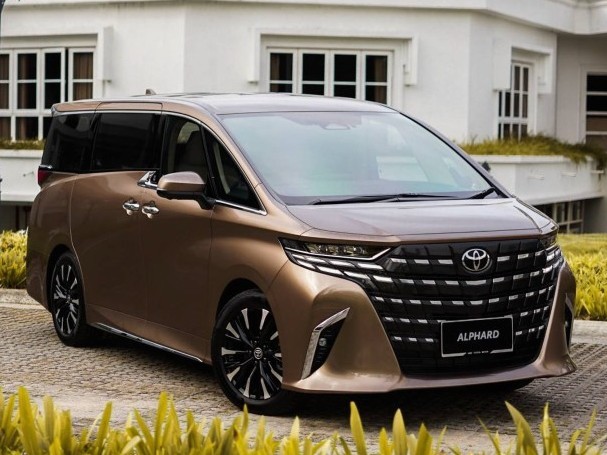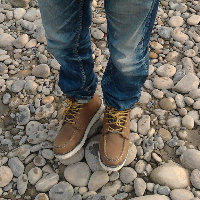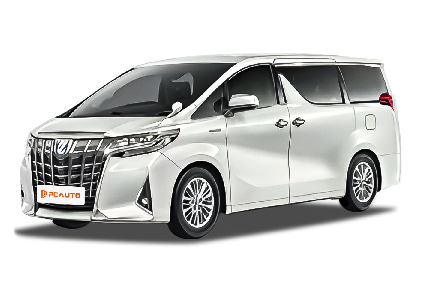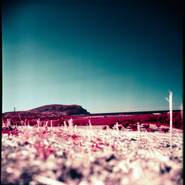Q
berapa pajak toyota alphard
When it comes to road tax (pajak) costs for the Toyota Alphard in Malaysia, the exact amount varies depending on the engine capacity and year of registration. Take the popular 2.5-liter (2494cc) variant, for instance – you're looking at around RM380 annually. Step up to the 3.5-liter (3456cc) version, though, and that figure jumps to approximately RM1,260. Keep in mind, actual costs might vary slightly between states or due to specific incentives.
It's crucial to note that road tax here is calculated based on engine displacement, not the specific model. So, other MPVs with similar engine sizes – think the Vellfire or even some luxury cars – will likely fall into comparable price brackets. Malaysia's system uses a progressive scale, meaning bigger engines mean bigger bills, which differs from countries that tax based on vehicle value or emissions standards. For the most accurate number, owners can check the JPJ website or MyEG platform by plugging in their license plate number.
Also, as a premium MPV, the Alphard's insurance costs usually run higher than its road tax. These are influenced by factors like the car's age and the type of coverage you choose. If you're considering buying one, it's smart to factor in the total cost of ownership upfront – that includes long-term expenses like maintenance and fuel consumption. Plus, being an imported model, replacement parts might cost more than they would for locally assembled vehicles.
Special Disclaimer: This content is published by users and does not represent the views or position of PCauto.
Related Q&A
Q
Is 2024 Alphard comfortable?
The 2024 Toyota Alphard has become a highly-regarded premium MPV in the Malaysian market for its outstanding comfort. Its seats are made of high-quality leather and come with electric adjustment, heating, and ventilation functions. In particular, the second-row Ottoman airline seats support multi-angle adjustment, providing passengers with a first-class-like seating experience.
The vehicle is equipped with sound-insulation technology and an adaptive suspension system, which effectively filter out road vibrations and noise. Coupled with the spacious legroom and three-zone independent air-conditioning, it ensures comfort even on long-distance trips. It's worth noting that as Toyota's flagship MPV, the Alphard's comfort design takes into account the needs of tropical climates. For example, the rapid cooling system and anti-UV glass are especially practical for Malaysian users.
Among vehicles in the same class, the Alphard often serves as a vehicle for business receptions or family outings, thanks to its advantages in quietness and seat ergonomic design. However, it is recommended to take a test drive before purchasing, as the perception of comfort may vary slightly depending on individual body types and road conditions.
Q
What type of suspension does Alphard 2024 have?
The 2024 Toyota Alphard features a combination of front MacPherson independent suspension and rear multi - link independent suspension. This suspension configuration not only provides a comfortable riding experience but also ensures a certain level of handling stability, making it highly suitable for Malaysia's diverse urban roads and long - distance driving needs. The MacPherson suspension has a simple structure and takes up less space, which helps to improve the utilization of interior space. On the other hand, the multi - link rear suspension can better filter road vibrations, ensuring the comfort of rear - seat passengers.
In addition, the 2024 Alphard may also be equipped with an adaptive suspension system (such as AVS), which can automatically adjust the damping force according to road conditions and driving modes, further optimizing the driving and riding experience. For Malaysian consumers, this suspension design can not only handle the common road unevenness issues in the local area but also offer a more premium riding quality during family outings or business receptions.
It's worth noting that MPVs in the same class, such as the Honda Stepwgn or the Nissan Elgrand, also adopt a similar suspension layout. However, Toyota leans more towards comfort in the suspension tuning, which is one of the reasons why the Alphard is highly favored in the high - end MPV market in Malaysia.
Q
Does 2024 Alphard have GPS?
The 2024 Toyota Alphard in the Malaysian market is indeed equipped with a GPS navigation system. As one of the standard features of this luxury MPV model, the system is usually integrated into the touchscreen display on the center console. It supports real - time traffic updates and voice command operations, which makes it convenient for drivers to plan their routes.
It's worth noting that the Malaysian version of the Alphard may offer multimedia systems of different specifications according to specific configuration levels (such as the 2.5L or hybrid version). However, GPS navigation is commonly available in high - end models. Some models may also support Apple CarPlay and Android Auto smartphone connectivity to enhance navigation flexibility.
For Malaysian users, the local terrain is complex and urban roads are dense. The original GPS usually comes pre - installed with Southeast Asian map data. However, it is recommended to confirm with the dealer before purchasing whether it includes detailed maps of Malaysia and subsequent update services.
In addition, if owners have higher requirements for navigation accuracy, they can also install a third - party navigation module through the dealer or use the smartphone mapping function. But be aware that this may affect the original factory warranty terms.
For reference, MPVs in the same class, such as the Honda Stepwgn or the Nissan Elgrand, also offer similar navigation configurations. However, it is recommended to experience and compare the specific functional differences during a test drive.
Q
Is Alphard 2024 a 4WD?
The 2024 Toyota Alphard doesn't offer a four - wheel drive (4WD) version in the Malaysian market. All models in the lineup come with a front - wheel drive (FF) configuration, which is different from what some consumers might expect for a luxury MPV to be equipped with a four - wheel drive system. As a high - end model focusing on comfort and business reception, the Alphard's design emphasizes quietness, space utilization, and a smooth on - road driving experience. Therefore, the front - wheel drive layout can better meet these requirements while reducing mechanical complexity and fuel consumption.
If you need a four - wheel drive MPV, you can consider other models from the same class, such as the Mitsubishi Delica D:5 or the Nissan Elgrand (which offers four - wheel drive options in some markets). However, note that the visibility of these models in Malaysia is relatively low. A four - wheel drive system is usually suitable for users who often encounter slippery roads or engage in light off - road driving. But for most urban road conditions in Malaysia, the handling and stability of the front - wheel drive Alphard are more than enough. Its V6 engine and hybrid version also have sufficient power output for daily use.
It is recommended to weigh your options according to your actual needs before purchasing a car. If you prefer the Toyota brand and need four - wheel drive, you can pay attention to SUV models like the Land Cruiser or the Fortuner.
Q
Is Alphard 2024 a van or SUV?
The 2024 Toyota Alphard is strictly speaking a luxury MPV (Multi-Purpose Vehicle), not an SUV. Despite its high body and spacious interior, its original design focuses more on providing a comfortable riding experience and flexible seat layout, making it suitable for family or business use, which is different from the off-road performance and sporty style emphasized by SUVs. In the Malaysian market, the Alphard is highly favored for its luxurious configuration and comfort, especially suitable for long-distance travel or urban commuting. The main difference between an MPV and an SUV lies in the chassis structure and usage. MPVs are usually built on a sedan platform, emphasizing space and comfort, while SUVs often adopt a high-chassis design, highlighting passability and versatility. The Alphard is more positioned as an MPV, but its high body and luxurious configuration also enable it to compete with some high-end SUVs in the market. If you're considering buying an Alphard in Malaysia, you can choose it with confidence. It's a great vehicle for both family and business scenarios, excelling especially in terms of comfort and practicality.
Q
How far can Alphard 2024 full tank go?
According to official data, the 2024 Toyota Alphard has a cruising range of approximately 600 to 800 kilometers when the fuel tank (with a capacity of about 65 liters) is full. The actual range depends on driving conditions and road situations. For instance, in congested urban areas where fuel consumption is relatively high, the cruising range may be close to 600 kilometers, while driving at a constant speed on the highway could result in a range of around 800 kilometers.
This vehicle is equipped with an efficient 2.5-liter hybrid system. By combining the advantages of an electric motor and a fuel engine, it can significantly improve fuel economy, making it especially suitable for Malaysia's ever-changing traffic environment.
If you want to further optimize the cruising range, it is recommended to maintain a steady driving style and have the vehicle serviced regularly. For example, checking tire pressure and the engine's condition. These small details can help reduce fuel consumption.
Moreover, the hybrid model primarily uses electric power at low speeds. This not only saves fuel but also reduces noise and emissions, making it ideal for city commuting. For users who often drive long distances, the Alphard's large fuel tank design and hybrid technology undoubtedly offer a more reassuring travel experience.
Q
Can you sleep in a Toyota Alphard 2024?
As a luxury MPV, the 2024 Toyota Alphard does allow passengers to rest or even sleep inside thanks to its spacious cabin and adjustable seats. In particular, the second-row aviation seats can be reclined to a nearly flat position. Coupled with privacy curtains and a quiet cabin environment, it offers decent comfort for short-term rest. However, it's important to keep the windows slightly open during long-term sleep to ensure air circulation. In the hot climate of Malaysia, it's advisable to start the engine and use the air-conditioner (while paying attention to safety and avoiding the risk of carbon monoxide in an enclosed environment).
This type of high-end MPV is commonly used for family trips or business receptions in the Southeast Asian market. The flexible space layout, such as the folding third-row seats, can expand the luggage storage space. But note that the original design is not intended for overnight camping. If you need long-term in-vehicle sleep, it's recommended to install a professional mattress and comply with local vehicle usage regulations.
Malaysian users can also pay attention to the Toyota Safety Sense system equipped in this car. Its pre-collision function can provide additional safety during parking and rest.
Q
What is the top speed of a Toyota Alphard 2024?
The top speed of the 2024 Toyota Alphard in the Malaysian market is approximately 180 km/h. This figure is based on different configurations of its 2.5-liter hybrid system (2.5L Hybrid) or 3.5-liter V6 naturally aspirated engine (3.5L V6). The actual performance may vary slightly depending on road conditions, load, and driving habits. As a large MPV that focuses on luxury and comfort, the Alphard places more emphasis on a smooth driving experience and fuel economy rather than ultimate speed. Its sound insulation technology and suspension tuning are both optimized for family and business needs. It's worth noting that the legal speed limit on Malaysian highways is usually 110 km/h. It is recommended that drivers comply with traffic rules to ensure safety. If you have higher performance requirements, you can pay attention to its competitors, such as the Nissan Elgrand or the Honda Stepwgn. However, with the low fuel consumption of its hybrid system (about 15-18 km per liter) and flagship-level space configuration, the Alphard remains a popular choice for local high-end MPVs.
Q
How many cc is the engine in the Toyota Alphard 2024?
The 2024 Toyota Alphard offered in the Malaysian market comes with engine options including a 2.5-liter naturally aspirated four-cylinder engine (2AR - FE) and a 2.5-liter hybrid system (2AR - FXE). The 2.5-liter naturally aspirated engine has a displacement of 2494cc, while the hybrid version also uses a 2494cc engine but is paired with an electric motor to improve fuel economy. Both of these engines are well - known for their smoothness and reliability, making them suitable for both family and business use. In particular, the hybrid version has an edge under Malaysia's increasingly strict emission standards.
For Malaysian consumers, as a high-end MPV, the Alphard's engine configuration strikes a balance between power requirements and energy-saving performance. Additionally, the vehicle is equipped with Toyota's latest safety technologies such as the TSS (Toyota Safety Sense) system, which meets local users' high demands for comfort and safety.
If you have a higher demand for performance, you can keep an eye on the 3.5 - liter V6 version (2GR-FKS, 3456cc) available in some overseas markets. However, the Malaysian version usually focuses more on fuel - efficient configurations.
Q
How many can sit in Alphard 2024?
The 2024 Toyota Alphard offers two seating configurations in the Malaysian market: 7-seater and 8-seater. The 7-seater version features a 2+2+3 layout (with independent aviation seats in the second row), while the 8-seater comes with a 2+3+3 layout. The specific configurations depend on the model version and optional packages. The spacious body, measuring approximately 4,945mm x 1,850mm x 1,895mm, ensures the comfort of passengers in all three rows. In particular, the second-row seats have a slide rail with an adjustable range of up to 800mm and are equipped with leg rests and heating functions.
This vehicle is powered by a 2.5L hybrid system (with a combined power of 250PS) or a 3.5L V6 gasoline engine (300PS). The Toyota Safety Sense system, including pre-collision warning and lane - keeping assist, is standard across all models.
As a popular model in the high - end MPV market in Malaysia, the Alphard's seat flexibility (the third row can be folded in a 50:50 ratio) and privacy curtain design are especially suitable for family outings or business receptions. Its competitors in the same class include the Nissan Elgrand and the Honda Odyssey. However, the Alphard maintains its competitive edge with more luxurious interior materials (such as wood grain panels) and sound - insulating glass technology. It should be noted that the actual number of passengers must also comply with the vehicle passenger regulations of the Malaysian JPJ.
Latest Q&A
Q
How much does a 2022 Honda Civic battery cost?
The battery price for the 2022 Honda Civic in Malaysia ranges from approximately RM300 to RM600, depending on the model and battery brand. Original equipment (OEM) batteries usually cost a bit more, while third-party brands like Panasonic, Amaron, or Bosch might offer more budget-friendly options. The specific price is also influenced by battery capacity (such as specifications like 40B20L or 55D23L) and the warranty period. It's advisable for car owners to choose a battery that matches the original specifications when replacing it to ensure compatibility with the vehicle's electronic system. Additionally, consulting local authorized dealers or reputable auto repair shops is a good idea, as they often provide free installation and testing services. Furthermore, regularly checking the battery's health (such as voltage and electrolyte levels) and avoiding prolonged vehicle inactivity can help extend its lifespan. If you experience difficulty starting the car or notice dim headlights, these could be signs of a aging battery, and it should be replaced promptly to avoid the hassle of breaking down on the road.
Q
How many miles does a 2022 Civic last?
With proper maintenance and regular use, the 2022 Honda Civic typically has a lifespan of between 200,000 to 300,000 miles (approximately 320,000 to 480,000 kilometers). Of course, its actual lifespan depends on things like your driving style; how often you service it; and the road conditions you encounter. The Civic is well - known for its reliability and durability—even here in Malaysia's tropical climate. Stick to regular oil changes, inspect the cooling system regularly, and maintain proper tire pressure, and you’ll further extend its lifespan.
Malaysia’s roads can be varied too—congested city traffic and long highway stretches both cause different levels of wear and tear. That’s why I’d recommend servicing every 6 months or 5,000 to 10,000 kilometers. It’s the best way to keep critical parts like the engine and gearbox in top shape. If you’re really aiming to keep your Civic running for the long haul, choose high - quality engine oil and genuine parts. They might seem like small details, but trust me, they play a crucial role in maintaining the car's long - term performance.
All in all, the 2022 Honda Civic is a durable pick for the Malaysian market. With proper and regular maintenance, it can ensure years of reliable driving.
Q
Does the 2022 Honda Civic have any recalls?
As of 2022, there were indeed some recall records for the 2022 Honda Civic in the Malaysian market. The main issue was with the Airbag Control Unit (ACU) software, which could potentially prevent the airbags or seatbelt pretensioners from deploying properly in a collision. Honda Malaysia has notified affected owners through official channels to arrange for a free software update. Additionally, certain models might experience engine stalling due to a manufacturing defect in the fuel pump module, and Honda has proactively recalled these vehicles to replace the relevant components.
For Malaysian owners, it's advisable to check the specific recall status of your vehicle by entering the Vehicle Identification Number (VIN) on Honda's official website or by directly contacting an authorized service center to confirm. Recalls are a normal part of a car manufacturer's commitment to product responsibility, and Honda's prompt response demonstrates its dedication to safety.
Malaysian owners who notice any abnormalities with their vehicles, such as dashboard warning lights illuminating or a loss of power while driving, should contact after-sales service promptly. You can also proactively ask technicians about the latest recall information during regular maintenance to ensure your car is in optimal condition.
Q
How to pre-start a Honda Civic 2022?
To pre - start your 2022 Honda Civic, first make sure the key is within range—usually 1 - 2 meters. Press the unlock button to wake up the system; then quickly press the "Engine Start" button twice without stepping on the brake. This puts the car into "ACC mode," where the dashboard lights up partially but the engine stays off—perfect for operating the radio or the windows. If you need full power for a system check, just press the start button once more (still no brake) to switch to "ON mode."
Malaysia’s heat is no joke, so pro tip: when pre - starting, hold the unlock button for 3 seconds to turn on the air conditioning to ventilate the cabin. But avoid doing it frequently—frequent pre - starts can drain the battery. If the car’s been sitting a while, it's better to start the engine normally to let the battery recharge.
A note on the engine: The 2022 Civic’s 1.5T Earth Dreams engine uses direct injection. Unlike old carburetor cars, there's no need for the traditional "warm - up" process—the ECU adjusts fuel delivery automatically on cold starts. Just avoid idling for more than 3 minutes, or you may receive an environmental protection warning (thanks to JPJ’s idle emission rules here).
Rainy season? Pre - start becomes your best friend for pre - checking TPMS and wiper condition. However, note that Honda Sensing features only activate once the engine’s properly running.
Q
What kind of battery is in the Honda Civic 2022?
The 2022 Honda Civic in the Malaysian market comes equipped with a 12V maintenance-free lead-acid battery, typically either the wet-flooded type or AGM (Absorbent Glass Mat) variant. Specific specifications can vary depending on the trim level—for instance, the 1.5L turbocharged models might feature higher-performance batteries to support the start-stop system. These batteries boast strong vibration resistance and low self-discharge rates, making them well-suited for tropical climates. It's advisable to regularly check the terminal cleanliness and electrolyte levels (for wet batteries) to maximize lifespan.
For Malaysian drivers, the hot climate can accelerate battery degradation, so avoiding prolonged use of in-car electronics with the engine off and scheduling professional battery checks every 2-3 years are crucial. When replacement is needed, Honda recommends batteries meeting JIS or DIN standards, such as the 55B24L model (for certain variants). Reputable third-party options like Panasonic or Bosch with matching specifications are also viable, though compatibility should be verified.
Additionally, modern automotive electronics demand stable voltage supply—substandard batteries may trigger false sensor readings. For peace of mind and to preserve warranty coverage, having replacements done through authorized service centers is recommended.
View MoreRelated News

How Much Is the Toyota Alphard? Luxury MPV Buying Guide & Cost Explained!
JohnApr 11, 2025

It is possible that ZEEKR 009 will be introduced in the future, will this affect the sales volume of Toyota Alphard?
MichaelSep 25, 2024

Toyota announced that the earliest mass production of solid-state batteries will be in 2027, and has currently developed highly durable cathode materials.
MichaelOct 13, 2025

Suzuki Fronx vs. Toyota Yaris Cross comparison, which one is more worth buying?
LienOct 5, 2025

Toyota Mystery Project teaser sparks speculation, Akio Toyoda personally involved in teaser process
JamesOct 2, 2025
View More


















Pros
Cons